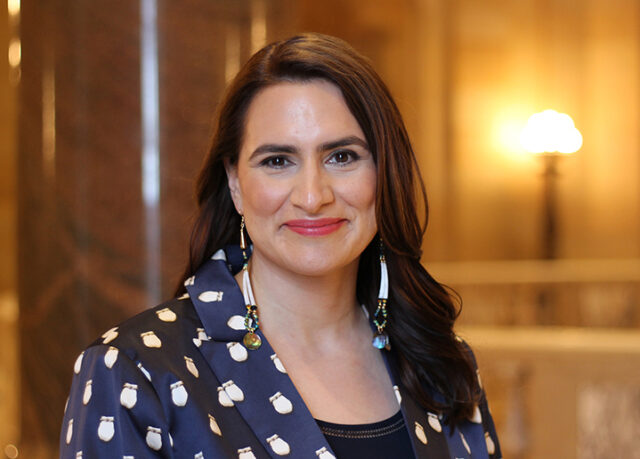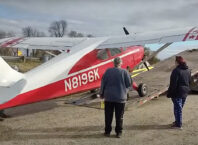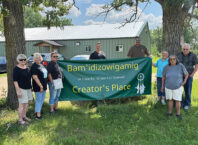By Lt. Gov. Peggy Flanagan
Boozhoo! I’m honored and humbled to serve another term as your Lieutenant Governor with Governor Tim Walz as we work to make Minnesota the best state in the country for all kids and families, including across Indian Country.
Governor Walz and I are committed to building strong government-to-government relationships with the 11 tribal nations that share geography with Minnesota and partnering with the robust urban Indian communities across the state. During our first term, we worked together across community to achieve important victories, including establishing the Missing and Murdered Indigenous Relatives Office, codifying tribal consultation, and creating a Tribal-State Relations Office housed within the governor’s office.
It was heartening to begin our second term and this year’s legislative session by taking part in the first-ever round dance in the Minnesota State Capitol rotunda. The event celebrated the Native American Legislative Caucus, which includes including Senator Mary Kunesh and Representatives Jamie Becker-Finn, Heather Keeler, and Alicia Kozlowski. It was incredibly powerful to hear the drums, songs, and laughter resounding throughout the halls of power; Native voices are needed in the Capitol when decisions are made that impact our lives and our communities. Something shifted at the Capitol that day – the space is forever changed. Miigwech to the Minnesota Indian Affairs Council and the Metropolitan Urban Indian Directors for convening such an impactful event.
This legislative session got off to a fast and productive start. Gov. Walz has already signed several bills into law, including the Protect Reproductive Options (PRO) Act, which protects abortion access in Minnesota; the CROWN Act, which prohibits discrimination based on natural hair styles and texture; and Restore the Vote, which will restore right to vote to thousands of people with felony convictions who have completed their incarceration.
There is more work ahead of us. The Governor and I released our budget recommendations, which includes more than $7 billion in proposals and investments that advance shared state and tribal priorities. I wanted to highlight a few of these items that I’m particularly excited about.
Investing in Native students. Part of making Minnesota the best place for kids to grow up is investing in a world-class education for every child. It matters when children can see themselves reflected in their classrooms and curriculum. We are asking lawmakers to fund: 1) An increase base funding for American Indian Education Aid to improve academic outcomes and meet the needs of Native students; 2) Native Language Revitalization Grants to school districts to offer instruction in Dakota, Anishinaabe, and other Indigenous languages, so students can stay connected to their cultures; and 3) the Minnesota American Indian Scholars Program, to provide tuition support and free pathways for Native students through their undergraduate education.
Building stability in housing. Housing is the foundation for health, safety, and growth – but far too many of our relatives are experiencing housing instability. That’s why our historic housing budget includes $44 million directly to Minnesota’s 11 sovereign nations to address their urgent housing needs; $100 million to preserve and rehabilitate existing housing so it can remain affordable; $128 million in down payment and closing cost assistance to help more Minnesotans become homeowners; and resources to help connect our relatives experiencing homelessness with shelter and resources, as well as preventing homelessness from occurring in the first place.
Tackling addiction and the opioid crisis. While addiction has touched every part of our country, we all know the opioid crisis has disproportionately impacted Native communities. We’re focused on investments to expedite access to behavioral health services and targeted investments to reduce disparities for opioid use disorders. We’re also working to ensure traditional healing practices are covered in substance use disorder grant funding because we know what treatments are effective for our community and that healing must address whole health and root causes of inter-generational trauma. And we are providing grants to recruit and train more Indigenous people and other people of color to become mental health professionals and licensed alcohol and drug counselors.
Growing the Missing and Murdered Indigenous Relatives Office. We’re proud to be the first state to create a Missing and Murdered Indigenous Relatives Office, but the work didn’t stop there. We now want to add resources and additional staff to that office and expand their capacity, as well as create an advisory board to help direct their work.
This is just a glimpse into what’s possible this legislative session, and it only happens when we work together. What is so deeply meaningful about what we’ve accomplished is that it was driven by tribes, tribal members, urban Indian leaders, and community. It makes a tremendous difference when we show up as our full Indigenous selves in the places and spaces where decisions are made – as elected officials, as advocates, as members of community.
I look forward to continuing to work in partnership to push for policies and investments that make a difference for all kids and families in Minnesota.







